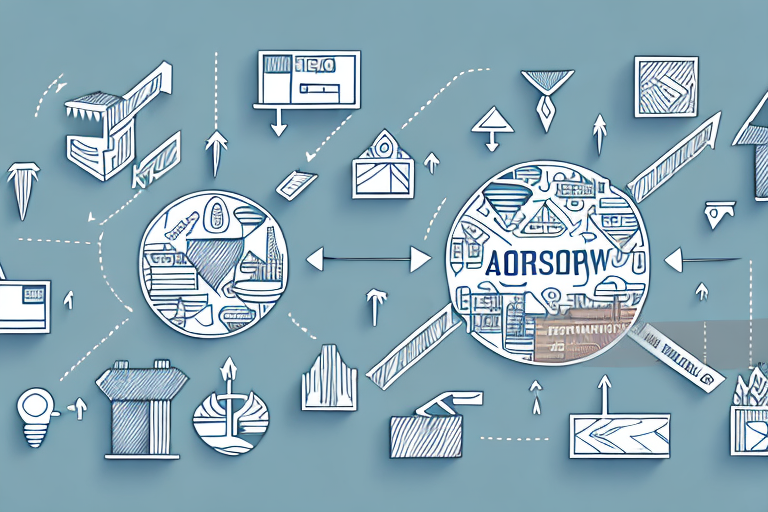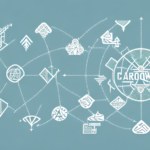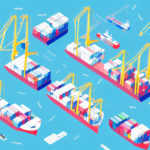Understanding Countervailing Duties in the Supply Chain
Countervailing duties are a type of trade policy tool that governments use to protect their domestic industries from unfair competition posed by imported goods. Essentially, these duties are tariffs imposed on imports to offset the subsidies provided to foreign producers by their governments. This article delves into the complexities of countervailing duties and their implications for supply chain management.
What are Countervailing Duties and How do They Work?
Countervailing duties are import taxes applied to goods that are found to have received subsidies from foreign governments. These subsidies might include grants, loans, tax breaks, or other financial assistance that give foreign producers an unfair competitive edge in the market. The primary objective of countervailing duties is to level the playing field, ensuring that domestic industries are not disadvantaged by artificially low-priced imports.
The imposition of countervailing duties typically involves an investigation initiated by the importing country, either through a petition by domestic producers or on its own accord. This investigation assesses whether foreign producers have received subsidies and whether these subsidies have caused material injury to domestic industries. If both conditions are met, countervailing duties are imposed on the affected imports.
Beyond protecting domestic industries, countervailing duties promote fair trade practices by discouraging foreign governments from providing subsidies that can distort global markets and harm other economies. However, the implementation of these duties must be carefully considered to avoid unintended consequences such as trade wars, increased consumer prices, and disruptions in downstream industries.
The Impact of Countervailing Duties on Supply Chain Management
Countervailing duties significantly influence supply chain management in several ways:
- Increased Costs: Additional tariffs on imported goods can raise costs, affecting lead times and making sourcing from affected countries less attractive.
- Operational Disruptions: Investigations and legal proceedings related to countervailing duties can be time-consuming and unpredictable, introducing uncertainty for international businesses.
- Retaliatory Actions: Affected countries may impose their own duties in response, leading to further supply chain disruptions.
To mitigate these risks, companies must monitor trade policy developments closely and develop contingency plans, such as diversifying their sourcing strategies and exploring alternative suppliers.
The History of Countervailing Duties and Their Role in International Trade
The concept of countervailing duties dates back to the 19th century, arising from protectionist policies in Europe. Over time, numerous countries have employed these duties across various industries, including steel, chemicals, textiles, and agriculture. The role of countervailing duties in international trade remains a topic of debate. Proponents argue that they are essential for ensuring fair competition, while critics contend that they can lead to protectionism and trade wars that negatively impact consumers and the global economy.
How Countervailing Duties Affect Importers, Exporters, and Consumers
The imposition of countervailing duties has varying effects on different stakeholders:
- Importers: Face higher costs for affected goods, which can reduce their competitive edge and profitability.
- Exporters: From affected countries may encounter retaliatory duties, limiting market access and reducing demand for their products.
- Consumers: May experience higher prices and fewer choices, especially for essential goods with no close substitutes.
Conversely, domestic producers might benefit from reduced competition, leading to increased sales and potential economic growth through job creation and innovation.
The Process for Calculating Countervailing Duties and Factors Considered
Calculating countervailing duties involves a detailed and complex process governed by international trade rules, particularly those outlined by the World Trade Organization (WTO). Key factors considered include:
- Nature and Extent of Subsidy: Evaluating the type and magnitude of financial assistance provided to foreign producers.
- Impact on Domestic Industry: Assessing whether the subsidies have caused material injury to the domestic market.
- Financial Benefits: Analyzing the economic advantages gained by foreign producers due to subsidies.
The duty is calculated based on both the value of the subsidy and the value of the imported goods, ensuring that the imposed tariffs accurately reflect the unfair advantage provided by the subsidies.
Common Exceptions to Countervailing Duties and Their Applications
There are notable exceptions to the imposition of countervailing duties:
- Research and Development Subsidies: Subsidies aimed at innovation and environmental protection may be exempt.
- Developing Countries: Special exemption rules exist to support the economic development of certain nations.
Companies should consult with trade experts and legal counsel to identify specific exemptions relevant to their importing and exporting activities.
Recent Changes in Countervailing Duty Policies and Their Effects on the Supply Chain
Recent years have seen significant shifts in countervailing duty policies. Notably, the United States has actively imposed duties on imports from China and other countries, escalating trade tensions and prompting retaliatory measures. The COVID-19 pandemic further disrupted global supply chains, highlighting the critical role of trade policy and risk management in maintaining supply chain resilience.
Businesses must stay informed about these policy changes and adapt their supply chain strategies accordingly to minimize disruptions and manage associated risks.
Strategies for Complying with Countervailing Duty Regulations in the Supply Chain
To ensure compliance with countervailing duty regulations, companies can adopt the following strategies:
- Continuously monitor trade policy developments and emerging trends.
- Diversify sourcing options and establish long-term contracts with suppliers.
- Collaborate with trade experts and legal advisors to navigate complex regulations.
- Implement robust risk management and contingency plans to address potential disruptions.
Proactive compliance measures can help companies minimize disruptions and avoid costly penalties and legal challenges.
Key Differences Between Countervailing Duties and Other Trade Tariffs
Countervailing duties are one of several trade policy tools used to regulate international trade. Other tariffs include:
- Anti-Dumping Duties: Prevent the sale of goods at unfairly low prices.
- Safeguard Measures: Temporary measures to protect domestic industries from sudden surges in imports.
- Revenue Tariffs: Imposed primarily to generate government revenue rather than protect domestic industries.
The primary distinction lies in their objectives: countervailing duties specifically address foreign subsidies, while other tariffs target different aspects of trade practices.
Future Predictions for the Role of Countervailing Duties in Global Supply Chains
As global supply chains become increasingly complex and protectionist sentiments rise, the role of countervailing duties is expected to evolve. Governments may continue to use these duties as a tool to protect domestic industries amid geopolitical tensions and economic shifts. Simultaneously, there is a growing emphasis on international cooperation to tackle global challenges such as climate change and public health, which may influence how countervailing duties are applied.
Companies adept at navigating these changes and adapting their strategies will be better positioned to thrive in the global marketplace.
Case Studies: Examples of Countervailing Duties in Action
Several recent instances illustrate the application of countervailing duties:
- The United States imposed countervailing duties on aluminum imports from China, leading to increased scrutiny and higher costs for American manufacturers.
- The European Union levied countervailing duties on biodiesel imports from Argentina and Indonesia, aiming to protect its domestic biodiesel industry from subsidized foreign competitors.
These cases highlight the complexities and challenges associated with countervailing duties, underscoring the necessity for companies to implement robust supply chain strategies and risk management plans.
Best Practices for Managing the Risks of Countervailing Duties in Your Supply Chain
To effectively manage the risks posed by countervailing duties, companies should consider the following best practices:
- Develop comprehensive risk management and contingency plans, including alternative sourcing and diversification strategies.
- Stay informed about trade policy and regulatory changes to anticipate and respond to new developments.
- Engage with trade experts and legal advisors to understand regulatory requirements and navigate duty investigations.
- Implement proactive compliance measures, such as conducting regular risk assessments, audits, and supplier evaluations.
Adhering to these practices can help companies mitigate the risks associated with countervailing duties and maintain a competitive advantage.
How Technology Can Help Streamline Compliance with Countervailing Duty Regulations
Technology plays a crucial role in ensuring compliance with countervailing duty regulations. Key technological tools include:
- Trade Compliance Software: Automates regulatory compliance processes, manages documentation, and assesses risk.
- Data Analytics Tools: Monitor trade policy developments and identify potential risks and opportunities.
By leveraging these technologies, companies can enhance their compliance efforts, reduce costs and risks, and gain a competitive edge in the market.
Conclusion: The Importance of Understanding and Adapting to Countervailing Duty Regulations
Countervailing duties are essential tools for governments aiming to promote fair competition and protect domestic industries from unfair trade practices. However, they introduce complexities and risks for companies engaged in international trade, including disruptions, increased costs, and legal uncertainties. To navigate these challenges effectively, businesses must thoroughly understand countervailing duty regulations, stay abreast of evolving trade policies, and implement best practices for compliance and risk management.
By adopting these strategies, companies can successfully manage the impacts of countervailing duties and maintain a strong presence in the global marketplace.




















